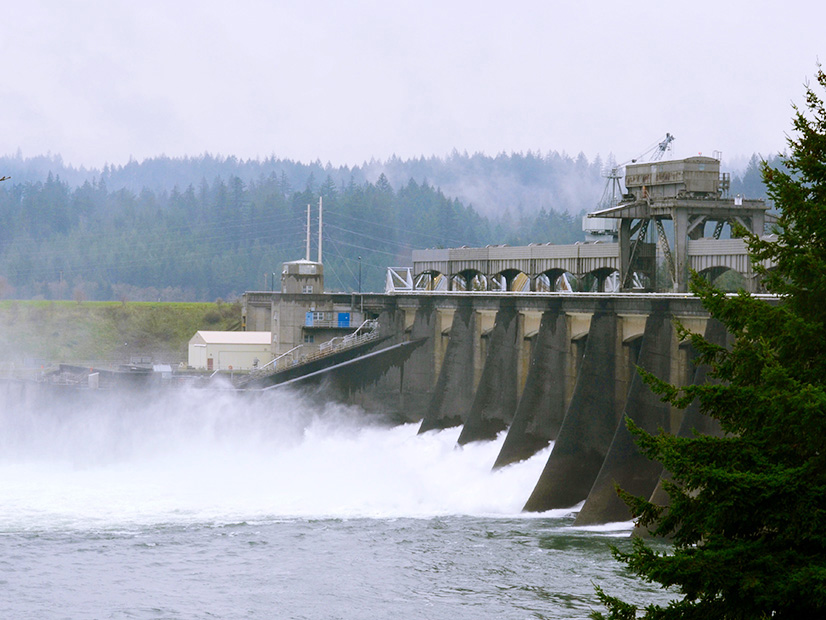The Bonneville Power Administration should have enough generation to avoid capacity deficits if it decides to join the “binding” phase of the Western Resource Adequacy Program (WRAP), the federal power marketing agency said Wednesday.
Participation in the WRAP will also have little impact on BPA’s marketing of surplus power, Steve Bellcoff, a BPA public utilities specialist, told customers during a public meeting Wednesday.
Surplus sales are a key source of BPA’s revenue, helping to defray overall system costs and reduce prices for the agency’s “preference” customer base of publicly owned utilities.
BPA has already committed to participating in the initial “nonbinding” phase of the Western Power Pool’s WRAP, scheduled to roll out in the third quarter of this year. In that phase, participants will be asked to offer “forward showings” of resource adequacy and availability seven months in advance of the summer and winter capacity periods but will not be penalized for failing to meet their requirements. (See NWPP RA Program Taking Shape for Q3 Launch.)
The agency has yet to issue a decision on whether to join the binding WRAP, which will impose penalties on participants that fail to close capacity deficits ahead of operating days.
“It’s in the coming months that we’ll start to get to a point where we’re looking at the contemplation of a decision to join for Bonneville,” Russ Mantifel, BPA Director of Market Initiatives, said during Wednesday’s meeting.
During the meeting, Bellcoff described some key — albeit surmountable — challenges to how BPA can ensure that it has enough capacity to meet its WRAP obligations. The difficulties arise, in part, from conflicts between WRAP processes and how the agency manages a hydroelectric system subject to the vagaries of weather.
Bellcoff explained that BPA begins its forecasting from the resources side, examining historical stream flows, applying current constraints and operations, then modeling the expected energy available from its hydro resources to determine how much load can be served.
On the other hand, the WRAP forward showing capacity requirement starts with the P50 (50% or higher probability) load forecast, and then adds a planning reserve margin (PRM) to that forecast.
“So everything that is done [for the WRAP] is on the opposite side of what we do today,” Bellcoff said.
Misaligned Timelines
Further complicating matters is the misalignment between WRAP timelines and BPA planning and forecasting horizons. The WRAP requires participants to submit forward showings by March 31 for the following winter season. Bellcoff noted that BPA doesn’t begin its hydro modeling for the following winter until June, months after that submittal.
“Prior to our first modeling for the next water year, we don’t have any idea what our water looks like in March or the following winter,” Bellcoff said.
Similarly, the forward showings for the WRAP’s summer season are due the previous Oct. 31, the start of the water year in the Pacific Northwest.
“The water forecast in October can be drastically different than what we would see in the spring, and those are important things because, in October, we’re still pretty conservative [in projecting] for the following summer,” Bellcoff said.
“There’s just way too many variables in our water year planning to establish at the forward showing seven months in advance of the seasons that we have vital knowledge on what our hydro looks like,” he said.
The conflicting timelines mean that BPA must rely on estimates from its long-term planning process to calculate expected capacity figures for the forward showings. Despite that complication, BPA’s own scenario planning suggests the agency has enough resources at its disposal to avoid capacity deficits along any of the WRAP’s operational timelines.
Bellcoff said the projected PRM requirements for the WRAP, based on data produced for the nonbinding phase, are 16% for winter and 12% for summer. For BPA that translates into PRMs of 1,102 MW and 768 MW, respectively.
“That’s what gets added to the load,” he said. “Those numbers are well within that wide-variety range that we look at today and plan for on the resource side, so they’re all within the uncertainty we plan for today.”
Bellcoff said that BPA also does not expect the WRAP to affect how its power operations department and trading floor work together to develop marketing strategies to deal with energy and capacity surpluses and shortages. And because BPA does not foresee capacity deficits, it does not expect WRAP to affect its marketing of surplus power to benefit preference customers.
A slide presented at Wednesday’s meeting summed up BPA’s perspective on the issue: “The capacity obligation associated with PRM is within today’s range of resource and load variability. In advance of any specific condition, it is not known when, or if, the forward showing capacity requirement would become additive to BPA’s trading floor’s existing risk tolerance.”



